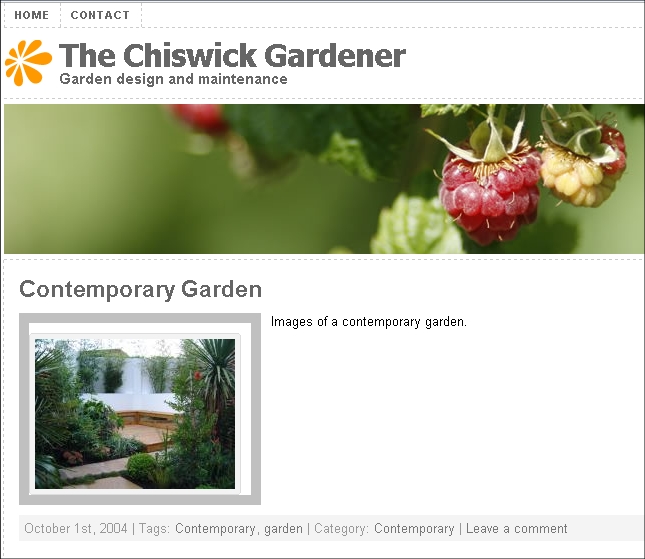
Go forth and prosper
If one wants to roll out even the most modest of web 2.0 internal comms initiative in the enterprise it can be very daunting. For every good idea there seems to be dozen doubters, for every champion a league of naysayers. In such circumstances it’s too easy to give up and stick to the traditional old ways – no one will be upset that way and you can always slowly advance your career in the tried and the trusted.
In our hearts many of us know this is a loss- a loss of opportunity and of a panorama of never to be seen horizons.
As with all potential great journeys, discovery and advance are only made by venturing from the straight and 1.0. How to move forward then when any approach seems beset by paths of treacle?
Nothing is softer than water
What I’d like to suggest is that the Chinese Philosopher Lao Tzu might have some interesting advice for us here, so I’ve compiled some of his inspirational quotes to guide us here. With this in mind, I’d like to look at how Lao Tzu can help us with deploying internal communications 2.0. Let’s start by considering of his observations about the unstoppable nature of water:
Nothing is softer or more flexible than water, yet nothing can resist it.
simplicity, patience, compassion
Social Media is like water. It’s not hard, it’s not machines, yet no matter what we do, or others do to stop it happening, it will find a way into the enterprise. No firewall is hot enough to evaporate it, no working practice to severe enough to prevent it. Remember all of this as the tide is on your side.
I have just three things to teach: simplicity, patience, compassion. These three are your greatest treasures.
Begin the journey
Keep your first 2.0 projects simple and above all have patience. Chances are it won’t happen immediately and don’t get fed up with people not accepting or using the tools. 2.0 like anything else will be used by people because it benefits them. If it goes wrong don’t blame them, look with compassion at why an application wasn’t used.
A tree that can fill the span of a man’s arms grows from a downy tip; A terrace nine stories high rises from hodfuls of earth; A journey of a thousand miles starts from beneath one’s feet.
Lead from behind
Start off modest – maybe some blogging software installed or a forum. While there’s a lot to be said for a joined up approach, far better to gain experience now, rather than waiting months for a large-scale complex solution. So start now, make those first baby steps.
To lead people walk behind them.
What is good
Look at what your audience do now, what benefits them, where they go to find information. Think how you can help them. Learn from what you audience wants and where they go. Lead and be lead at the same time.
Truthful words are not beautiful; beautiful words are not truthful. Good words are not persuasive; persuasive words are not good.
Tell no fibs
Be honest with your audience, don’t try and blind them with science or gobbledygook, no matter how well intentioned. Keep it simple and honest – they will see through duplicity eventually. So no BS, ever!
Without stirring abroad, One can know the whole world…
Where are you going?
Allow your audience to create their world by pulling in the information they want. Make sure that they can easily find and access the information they need. Use RSS webfeeds so they can get the information without having to surf the entire intranet. Make sure search in the enterprise is tip-top and can find social media info. (But also check it’s not swamping all other search…)
If you do not change direction, you may end up where you are heading.
The reality check
Set objectives and have measurable aims. Review these regularly – look at your metrics and milestones. Be flexible and don’t be afraid of changing direction!
Let reality be reality. Let things flow naturally forward in whatever way they like.
How to make crooks
Accept and expect the unexpected and learn from where 2.0 takes us and evolves. Don’t try and force an outcome, even if your audience will let you, it won’t work. If media gets used in ways that you didn’t expect then learn from that rather than trying to stop it.
The more laws that are written, the more criminals are produced.
Of that which we cannot speak
Don’t over govern or over legislate web 2.0 in the enterprise. There will always be those who distrust your audience and fear what might get said in a blog or discussion. Trust them, we can all make career limiting moves by sending out an e-mail, social media is no different. So by all means create guidelines and best practice but try and avoid a big list of Don’ts.
He who knows, does not speak. He who speaks, does not know.
Fishing on the net
Social media can often draw out the shy and bashful who have a lot to say and lots to share. Conversely, it can highlight the real value (or not) of the louder contributors too – empty vessels make the most noise etc. Make sure that you media allows the shy to be heard – you may find that they have the most value to add. Any lecturer will tell you this – the best essays can come in from the quietest student.
Give a man a fish and you feed him for a day. Teach him how to fish and you feed him for a lifetime.
Wicked leaders
An old favourite but still true. Provide training and help – many will learn the technology rapidly – that’s what 2.0 is all about, but make it as easy as you can and provide support, aids and training materials. Think of ways that your audience can teach others to fish – forums for newbies supported by the early adopters.
The wicked leader is he who the people despise. The good leader is he who the people revere. The great leader is he who the people say, ‘We did it ourselves.’
Our job as 2.0 internal comms leaders is all about enabling our audience. Enabling them to find the information they want at the right time and place (or that information finding them), it’s about conversation, collaboration and sharing. And above all 2.0 is all about the ‘we’: us doing it for ourselves….
 For my part, the specificity of the communication seemed the most paramount and while for example I might be annoyed to be fired by SMS, the clarity of the message would remain undiluted by the medium used. McLuhan may have argued that the medium is the message, but that doesn’t alter the message whether face to face or an SMS.
For my part, the specificity of the communication seemed the most paramount and while for example I might be annoyed to be fired by SMS, the clarity of the message would remain undiluted by the medium used. McLuhan may have argued that the medium is the message, but that doesn’t alter the message whether face to face or an SMS.

